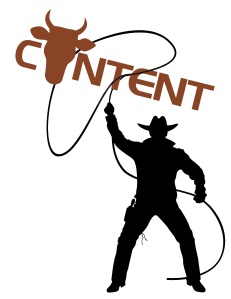If you are involved in content marketing on any level, no doubt you have seen the phrase “content curation” being tossed about. General consensus is that a content curator sifts through all the available content to serve up what is most important to your customers.
The benefits of curation are many; with an infinite digital universe of information, you definitely need someone to not only sort through it but to search out and find it. Call them curators, quarterbacks, captains or cowboys; this person excels at being able to ferret out valuable information and transform it into the most relevant context and format. Where do they find it?
1) Inside your company: Think of all the touchpoints you already have – they need to be a part of your content publishing machine. Establish a process or protocol for soliciting and gathering content to make it easy to participate.
2) Competitors: You are already scanning the competitive landscape to stay one step ahead. If you have a point of difference that gives you an edge, play it up and let your customers know.
3) Research: Whitepapers that are easily downloaded show off your company’s smarts and help establish you as a leader. Post it on your social channels, as well as SlideShare – it’s all free.
4) Industry resources: If you think it’s valuable, chances are so do your customers so share what’s meaningful.
But does curation actually lead to more original content? After reading an excellent post on content curation by @joepulizzi, we’d like to expand on this point for a minute. If you are really lucky, your content curator can filter and create content. But most likely, true curation involves more than one person. Curation acts as a filter of all available assets; creation is writing, producing, developing ideas into valuable assets. These are two different functions that require different skill sets. While curation is a full-time job, content creation can come from several resources: sales, marketing, creative, agencies or user-generated. And as @joepulizzi notes, original content is still key but remains the biggest challenge for marketers. The answer may lie in dedicating the right number of resources to get the results you need.
What do you think? How many people at your company are involved in content curation?






